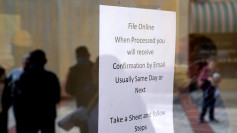US consumer inflation saw a slight decrease in February, but the data still indicates that inflation remains elevated. The Labor Department released data on Tuesday which shows that the consumer price index (CPI) rose six percent from a year ago, below January's figure and in line with expectations.
However, this level still remains well above the Federal Reserve's longer-term two percent inflation goal. The CPI rose 0.4 percent between January and February, slowing from the previous month as well.
The Labor Department stated that the index for shelter was the largest contributor, accounting for over 70 percent of the increase. Other contributors include indexes for food, recreation, as well as household furnishings and operations.
The Fed has been aggressively campaigning to tame inflation, raising interest rates eight times since early last year in an effort to ease demand. The central bank had initially stated that it was prepared to increase the pace of rate hikes if necessary as economic data runs hot. However, the collapse of Silicon Valley Bank (SVB) last week and New York-based Signature Bank may now complicate the Fed's efforts.
According to economist Rubeela Farooqi of High Frequency Economics, the data supports a 25 basis points rate hike at the Fed's upcoming policy meeting. However, she added that "the decision ultimately will depend not only on the economic data but also financial stability concerns, which could keep the Fed on the sidelines next week."
The higher rates set by the Fed and other central banks worldwide have helped several lenders post healthy profits for 2022. However, the higher rates have also decreased the value of bonds bought by banks when they had lower returns.
The implosion of SVB marked the biggest banking failures since the 2008 global financial crisis, leaving the Fed in a tough position as it tries to battle inflation without adding to an ongoing rout of some banking stocks.
Excluding the volatile food and energy segments, CPI picked up 0.5 percent from January, edging down from the prior month's number. While many analysts had initially predicted that the Fed could step up its rate increases as the economy runs hotter than hoped, some are now dialing back their expectations. The continued challenge for the Fed is to balance its inflation fight with financial stability concerns, as it navigates a complex and ever-changing economic landscape.






